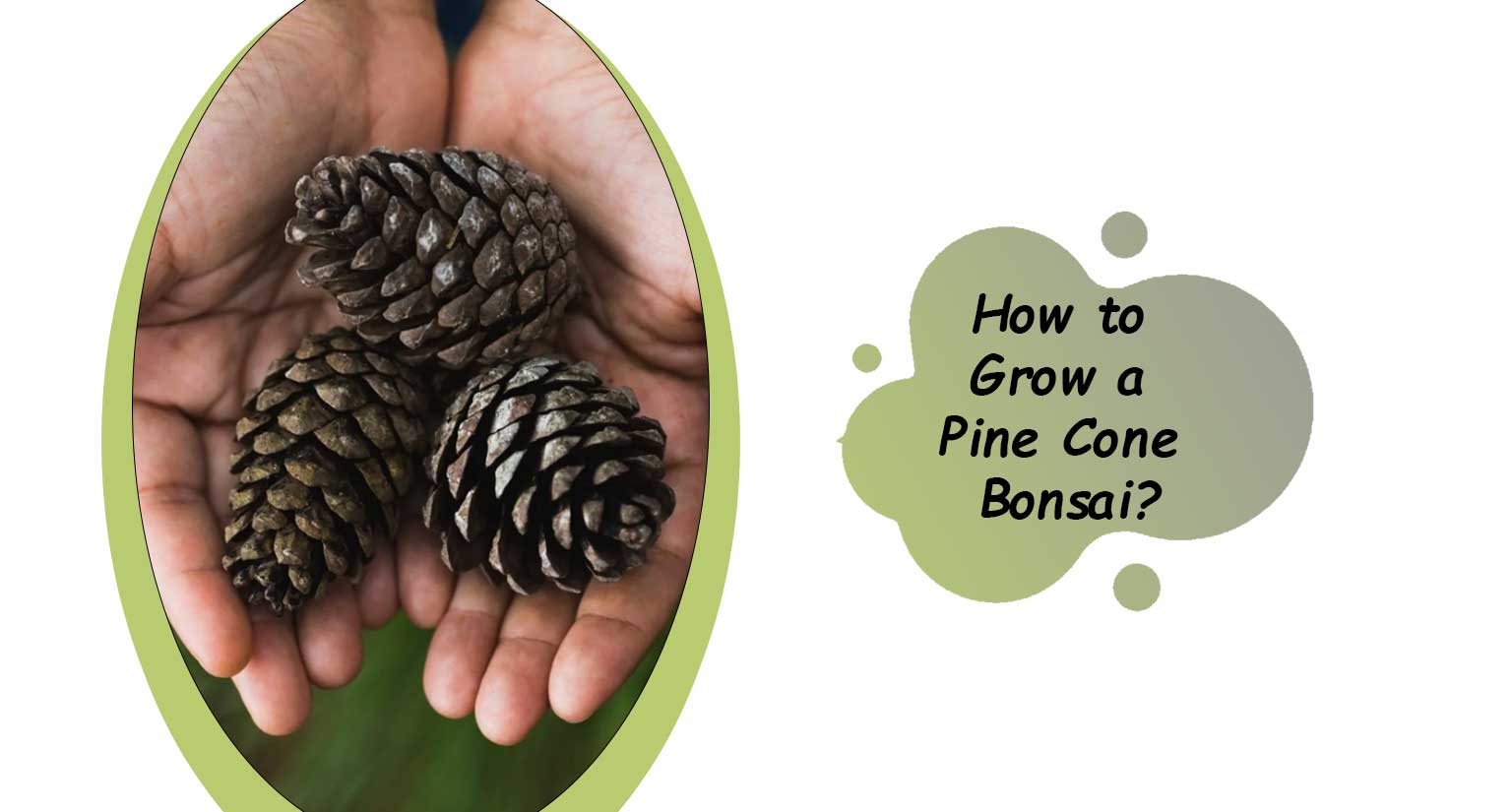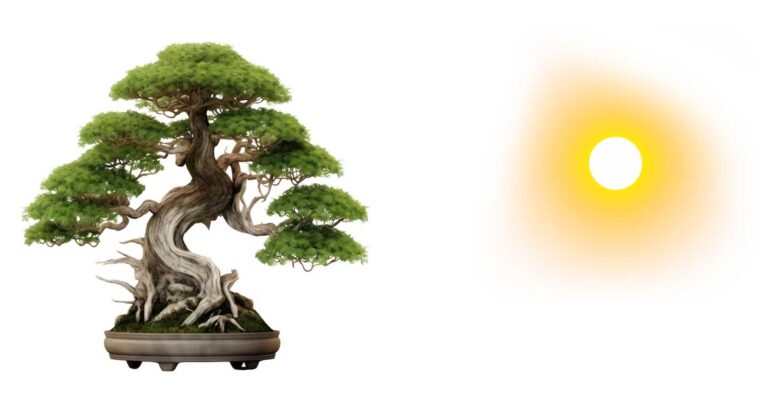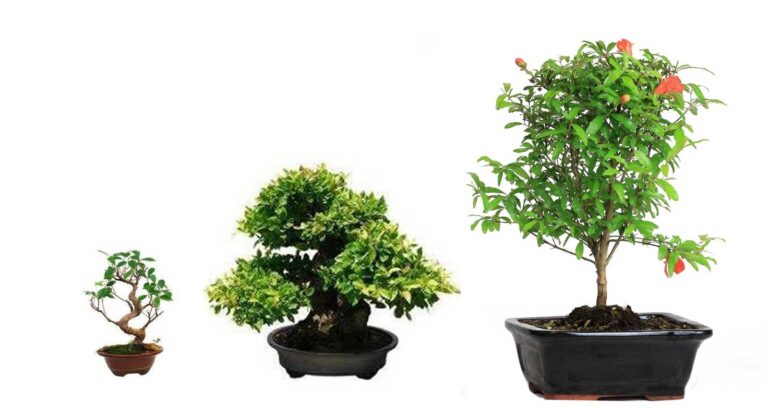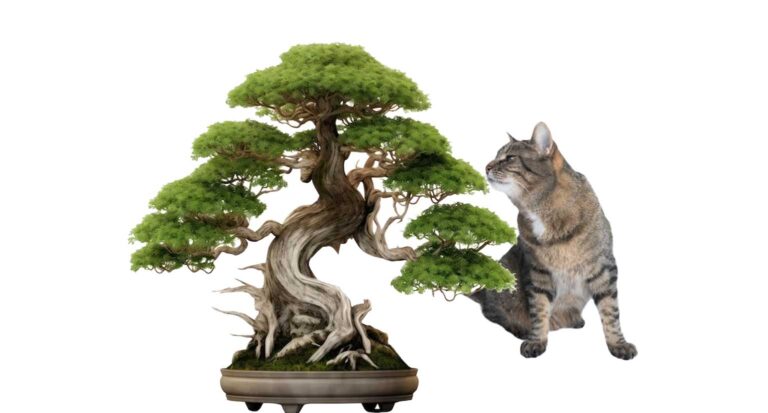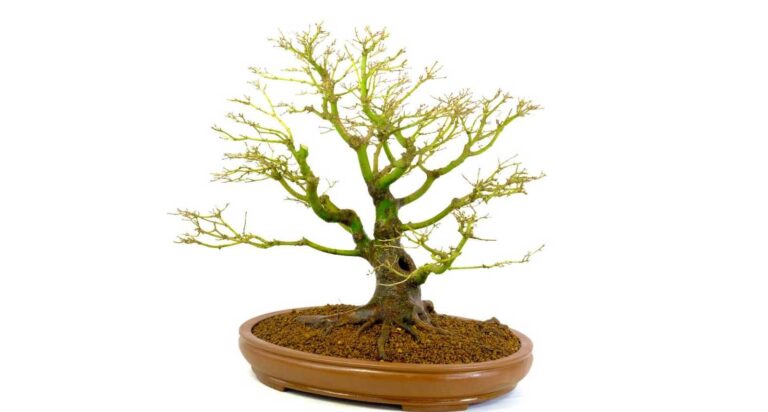How to Grow a Pine Cone Bonsai?
Welcome to a fascinating journey into the world of pine cone bonsai cultivation. In this comprehensive guide, you’ll discover the secrets to nurturing and shaping these charming miniature trees.
Whether you’re a seasoned bonsai enthusiast or a green thumb looking to explore a new art form, we’ll provide you with expert insights on How to grow a pine cone bonsai. Let’s embark on this horticultural adventure together.
Can You Bonsai Pinus Pinea?
Bonsai enthusiasts often wonder if they can bonsai Pinus Pinea, commonly known as the stone pine. While Pinus Pinea isn’t the most typical choice for bonsai.
It can certainly be transformed into a captivating miniature tree with the right techniques and care. Here’s a detailed guide on how to bonsai Pinus Pinea:
Understanding Pinus Pinea
Pinus Pinea is a hardy pine species with long needles and distinctive, umbrella-shaped canopies. Before attempting to bonsai this tree, it’s crucial to learn about its specific characteristics and growth habits.
1. Selection of a Young Tree
Begin by choosing a young Pinus Pinea tree. Select one with a straight, slender trunk and branches that display a sense of balance and harmony.
2. Pruning and Shaping
Pinus Pinea’s growth habits make it a suitable candidate for bonsai. Regularly prune and shape your tree to encourage a compact, elegant form. Pinch back new growth to maintain the desired silhouette.
3. Repotting
Repot your Pinus Pinea bonsai every two to three years during the spring, using a well-draining bonsai soil mix. This will prevent root binding and maintain the tree’s health.
4. Watering
Pinus Pinea prefers slightly drier conditions than other pine species. Water your bonsai when the top inch of the soil begins to dry. Avoid overwatering, as this can lead to root rot.
5. Fertilization
Use a balanced, slow-release bonsai fertilizer to provide essential nutrients to your Pinus Pinea. Apply fertilizer in early spring and late summer, following recommended guidelines.
6. Winter Care
Protect your Pinus Pinea bonsai from harsh winter conditions. While it can tolerate some cold, it’s best to provide shelter or bring it indoors if extremely low temperatures are expected.
7. Wiring
Wiring can help shape the branches of your Pinus Pinea bonsai. Use care when wiring to avoid damaging the delicate branches.
8. Patience
Bonsai is an art that requires patience. The transformation of your Pinus Pinea into a stunning bonsai may take several years. Be attentive to your tree’s needs and appreciate the slow but rewarding process.
Bonsai Pinus Pinea may not be the most common choice, but with dedication and skill, you can create a unique and beautiful living work of art. Keep in mind that each Pinus Pinea bonsai is a testament to your dedication and passion for the art of bonsai.
Bonsai Pine Cones
Bonsai pine cones are a delightful and unconventional way to explore the art of bonsai. While they are not your traditional bonsai trees, they offer a unique and eye-catching variation. Here, we’ll delve into the intriguing world of bonsai pine cones and how to create them:
1. Pine Cone Selection
Begin by selecting pine cones from a species suitable for bonsai, such as Scots Pine (Pinus sylvestris) or Japanese Black Pine (Pinus thunbergii). Choose well-formed, healthy cones that have the potential for interesting shapes.
2. Cleaning and Preparation
Thoroughly clean the selected pine cones to remove any dirt, debris, or resin. Gently brush or rinse them and let them air-dry completely. This step is crucial to ensure that you have a clean canvas for your bonsai creation.
3. Designing Your Bonsai Pine Cone
Examine the pine cones’ natural form and identify the potential for artistic expression. Decide on the style you want to achieve, such as formal upright, informal upright, or cascading. Then, sketch or mentally plan your design.
4. Wiring and Shaping
Using bonsai wire, carefully and gently shape the pine cone according to your design. This process can take time, and patience is key. Avoid exerting too much pressure, as pine cones can be delicate.
5. Planting Your Bonsai Pine Cone
Prepare a well-draining bonsai soil mix in a shallow bonsai container. Secure the shaped pine cone in the soil, ensuring it is stable and upright. Water the soil thoroughly but avoid saturating it.
6. Placement and Care
Position your bonsai pine cone in a location with bright, indirect sunlight. Maintain consistent care, including regular watering to keep the soil lightly moist and occasional feeding with a balanced bonsai fertilizer.
7. Pruning and Maintenance
Keep an eye on the pine cone’s growth and trim or shape it as necessary to maintain the desired form. Bonsai pine cones may require less pruning than traditional bonsai trees but still benefit from some maintenance.
Creating bonsai pine cones is a unique and creative way to express your passion for bonsai. The results can be stunning and provide a captivating conversation piece.
Each bonsai pine cone is a work of art that showcases the beauty and adaptability of nature in the world of bonsai.
How to Grow a Pine Cone Bonsai?
Growing a pine cone bonsai is a rewarding and captivating endeavor, but it requires patience, care, and attention to detail. Below, we’ll take you through the step-by-step process of cultivating a stunning pine cone bonsai:
1. Selecting the Right Pine Cone
Start by choosing a healthy pine cone from a local forest or nursery. Look for one that is well-formed, disease-free, and approximately the size you desire for your future bonsai.
2. Extracting the Seeds
Carefully remove the seeds from the pine cone. This can be done by gently prying the cone apart or shaking it to release the seeds. Ensure that you collect a sufficient number of seeds to increase the chances of successful germination.
3. Stratification
To mimic the natural conditions required for pine cone seed germination, place the seeds in a plastic bag with a moistened paper towel.
Store the bag in your refrigerator for several weeks to stratify the seeds. This cold period is essential for breaking their dormancy.
4. Preparing the Soil
Select a well-draining bonsai potting mix. Fill a shallow bonsai container with the soil mixture, leaving some space at the top for planting the seeds.
5. Planting the Seeds
Gently press the stratified pine cone seeds into the prepared soil, ensuring they are evenly spaced. Lightly cover the seeds with a thin layer of soil.
6. Watering and Light
Keep the soil consistently moist, but not waterlogged. Place the pot in a location with indirect sunlight. Pine cone bonsai seeds thrive in bright, filtered light.
7. Patience and Care
Germination can take several weeks to a few months. Be patient, and once seedlings emerge, continue to nurture them with the right amount of water and light.
8. Pruning and Shaping
As your pine cone bonsai grows, regularly prune and shape it to encourage its desired form. Bonsai wire can help guide the branches.
9. Fertilization
Use a balanced bonsai fertilizer to promote healthy growth. Follow the recommended guidelines for your specific bonsai species.
10. Repotting
Every couple of years, repot your pine cone bonsai to ensure it has enough space for its roots to grow and thrive.
Conclusion
In the realm of horticultural artistry, the journey of cultivating and crafting pine cone bonsai or exploring the possibility of bonsai pine cones is nothing short of awe-inspiring.
This guide has not only shed light on “How to Grow a Pine Cone Bonsai” but has also delved into the unique world of bonsai pine cones.
The allure of miniature trees, sculpted with care and precision, has drawn countless enthusiasts into the captivating universe of bonsai.
Whether you’re tending to a traditional pine cone bonsai or experimenting with the artistic potential of bonsai pine cones, the process is a testament to your dedication, creativity, and love for these living masterpieces.
As you embark on your journey to grow and shape these botanical treasures, remember that bonsai is not merely a pastime; it’s a reflection of your connection with nature, your patience, and your artistic expression.
Each bonsai, be it a miniature pine tree or a bonsai pine cone, tells a story of growth, adaptation, and the enduring bond between a caretaker and their unique creation.
With commitment, patience, and a deep appreciation for the art of bonsai, your efforts are certain to yield beautiful and captivating results.
Whether you’re nurturing a traditional pine cone bonsai or exploring the creative potential of bonsai pine cones, the satisfaction of crafting these natural wonders is an art form that continually blossoms, much like the trees themselves. So, go forth and cultivate your bonsai dreams, one pine cone at a time.

